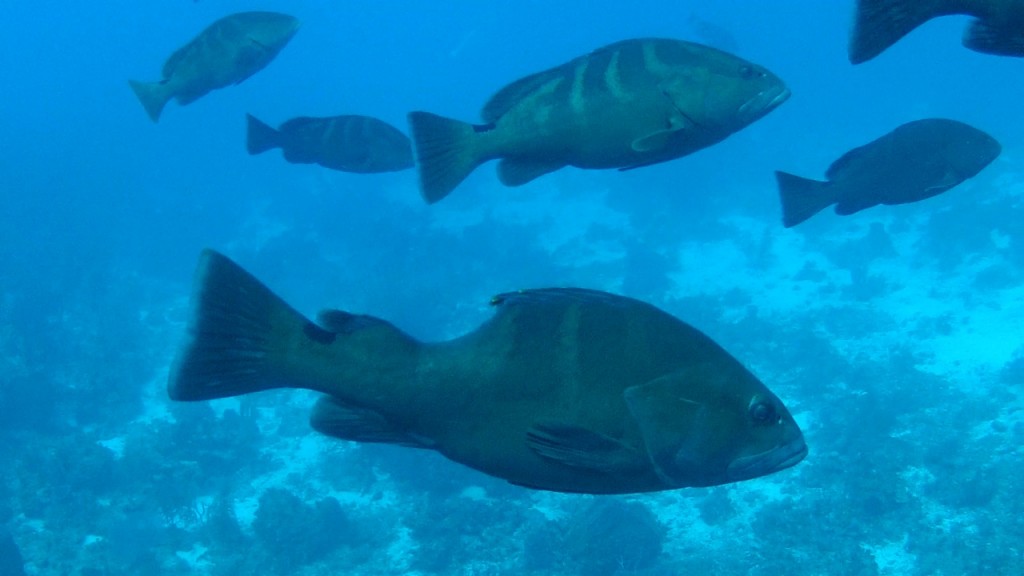Hello Everyone!
It was so great to talk with you today on the live video feed and share some of the work happening here on Little Cayman. During our discussion today, the question was asked, “Who are the Nassau Grouper’s predators?” Sharks are certainly one of their main predators on the aggregation. Below is a story from a few years ago about a fish we found that had been attacked by a shark. Take a look!
Here you go:
While eating lunch yesterday, we got a phone call from one of the local dive shops here on Little Cayman (there are 4). Apparently, they had gone out on a morning dive near the grouper’s aggregation site and found a badly injured, adult Nassau floating at the surface of the water and a Caribbean Reef Shark circling the fish. The dive boat scared the shark away, so one of the dive masters collected the grouper and brought it back to shore. The divers wanted to know if we could possibly help. So, we rushed over and found the fish in a large container filled with sea water. It had two big gashes, one on it’s head and another near its tail. Also, it’s swim bladder was distended and filled with air, which happens if a fish ascends to the surface quickly. Dr. Brice Semmens, a lead scientist on the project, quickly assessed the situation. He decided to first use a syringe to release the air from it’s bladder.

You can see the big gash on the back of it’s head.

You can see that the grouper’s belly is distended. It is actually the fish’s swim bladder filled with air.
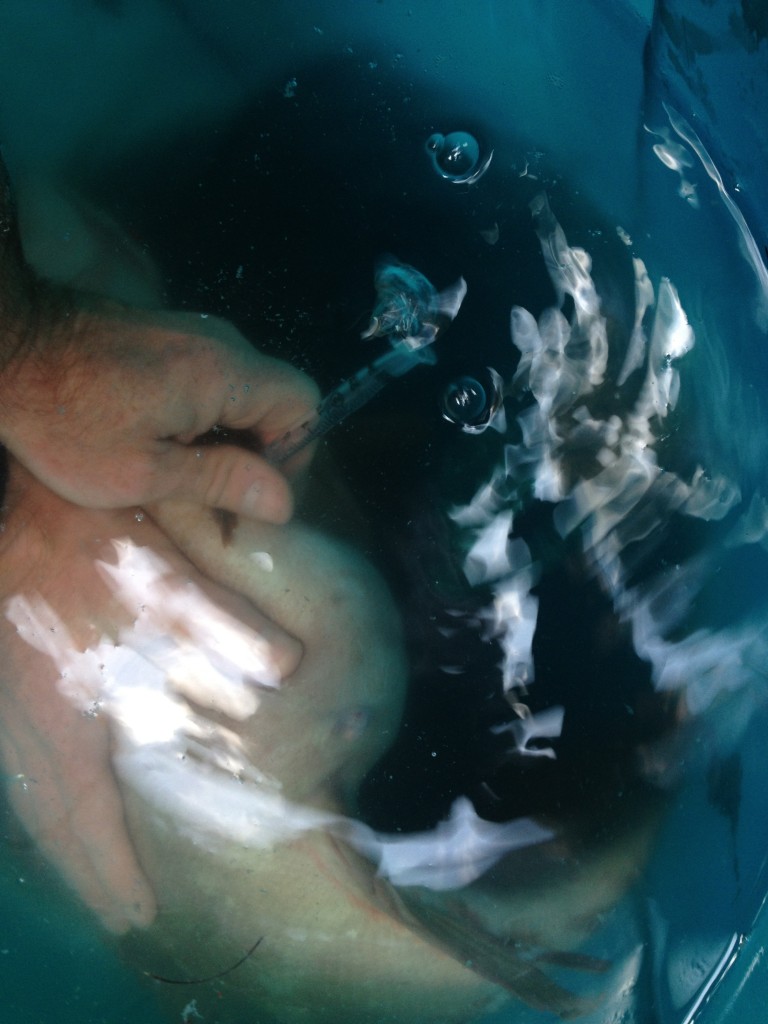
Here you can see Dr. Semmens using a syringe to release the air from the fish’s bladder.
Next, it was decided that we would take a blood sample from the fish, to be used in the Grouper Moon Project’s genetics study of the local Nassau.

This blood sample will be used to help in the Grouper Moon Project’s genetic study of the local grouper.
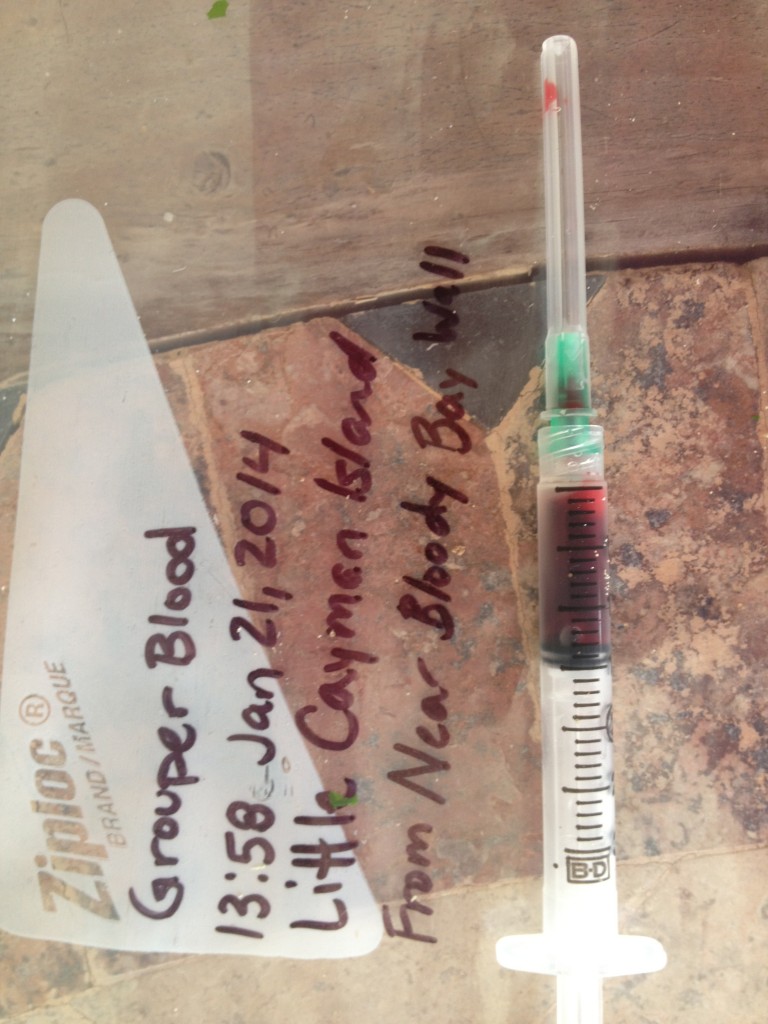
The grouper was still quite alive though badly injured. We decided that if we could get it back into the water, and it was able to still swim, it could possibly hunker down in a safe place in the shallow waters near shore and recover. So, we released him back into the water close to the dock.
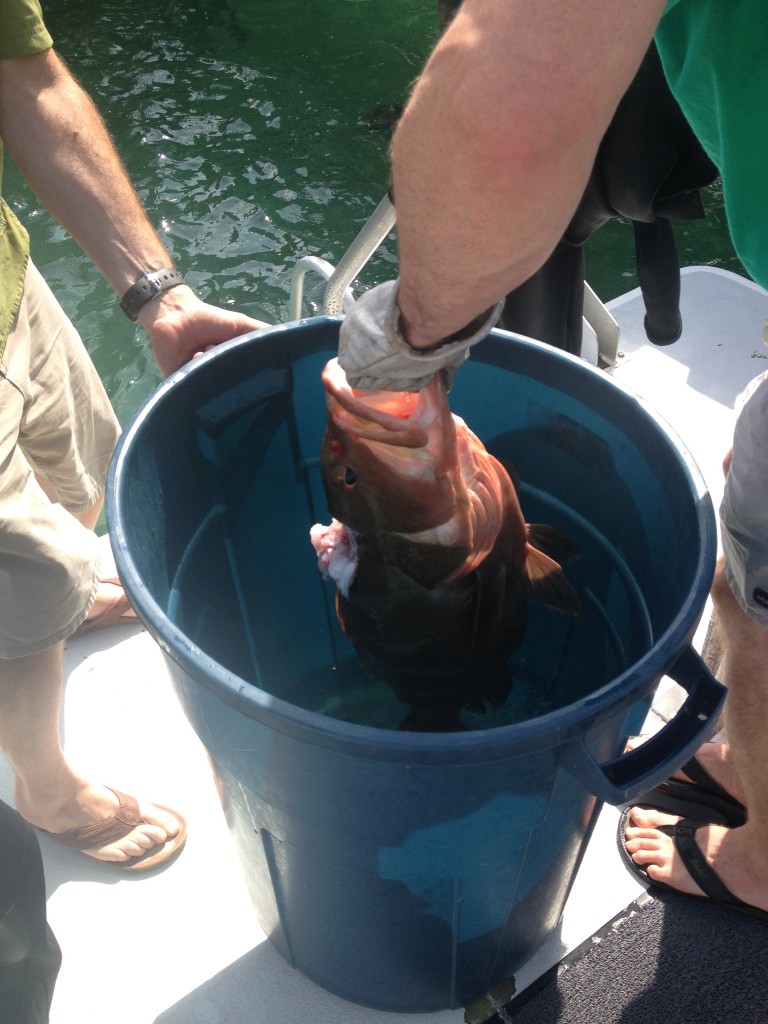
Getting ready to release the grouper.

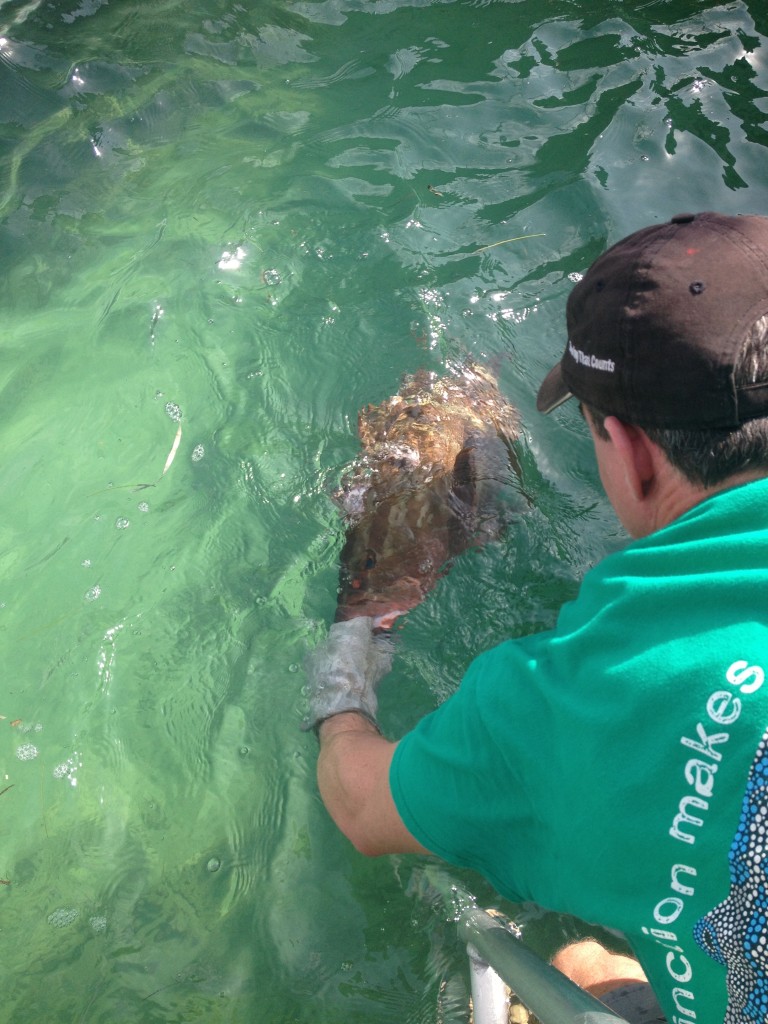
Dr. Semmens releases the Nassau back into the water!
The large, beautiful grouper quickly swam to the bottom and then off it went under the dock. It looked a bit wobbly and we have no idea if the grouper will be able to survive or not but we sure hope so!! What do you think?


